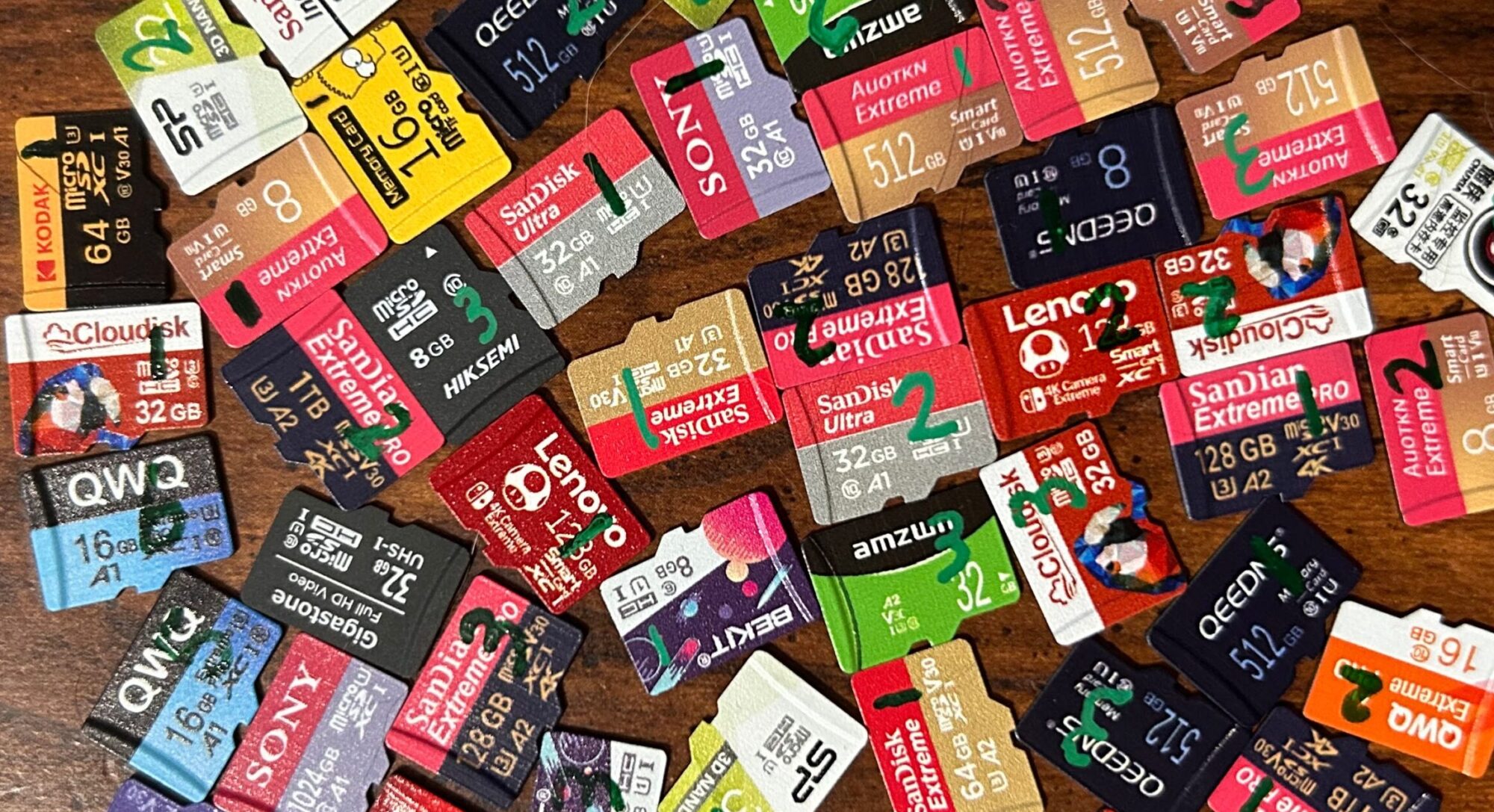PNY is a brand that I’ve long been aware of. Founded in New York in 1985, they were originally a memory chip vendor; they have since expanded into flash memory, graphics cards, HDMI cables, and even battery chargers. It took me a while to realize that PNY wasn’t being represented in my project — and that’s probably due to the fact that, being an American company, you won’t usually come across their products being sold on AliExpress. But even outside of AliExpress, I was able to find some of their products that fell within my price range.
One thing that struck me as odd: sample #3 is just a tad larger than the other two — by about 50MB. In addition, the data in its SSR indicates that it supports A2, whereas the other two samples only support A1. I would have said “maybe PNY is in the process of upgrading their cards” — except that according to the CID data, sample #3 is actually about a year older than the other two. Go figure.
On the performance front, this card performed pretty well. Here’s how things shook out in each category:
- Sequential read: All scores were pretty tightly clustered together, coming in between the 86th and 90th percentiles (as of the time of this writing). It looks like these cards don’t support the enhanced speeds that SanDisk (and a few other cards) do, so these speeds are actually only a little bit above average.
- Sequential write: All scores were pretty close to each other, coming in between the 94th and 97th percentiles.
- Random read: Sample #2 performed a little bit better than the other two, coming in at the 96th percentile. The other two came in at the 84th and 85th percentiles.
- Random write: Sample #3 performed a little worse than the other two, coming in at the 85th percentile. The other two came in at the 95th and 96th percentiles.
These cards carry the U3, V30, and A1 markings. (The Class 10 mark appears on the packaging, but does not appear on the card itself.) All three samples performed well enough to qualify for all of these markings. (Well done, PNY!)
On the endurance testing front:
- Sample #1’s first error was…well, I don’t know what to make of it. It was a data mismatch error of some sort that only affected one sector during round 589 — but it only affected the last four bytes of the sector (where I store the CRC for that sector). And on top of that, the CRC check passed — which tells me that either something was wrong with the CRC check, or the data I reconstructed was wrong. It’s odd, to say the very least. At any rate, it’s still chugging along quite happily; it has survived 4,053 read/write cycles in total so far.
- Sample #2’s first error was a single bit flip, in a single sector, during round 1,400. It has survived 4,067 read/write cycles in total so far.
- Sample #3’s first error was a single bit flip, in a single sector, during round 387. It has survived 3,844 read/write cycles in total so far.
Overall? These seem to be pretty good cards. Performance was good — with the worst individual score putting it in the top 15% of all cards — and price per gigabyte was below average. Skimp is above average (for a non-fake flash card), but is definitely not the worst I’ve seen. And as far as endurance — it’s still too early to say how durable they are (despite the fact that they’ve been in endurance testing for over a year now), but so far things are looking good. But based on the data I have so far, I think I’d have to say “yes, these are good cards”.
June 19, 2025 (current number of read/write cycles is updated automatically every hour)

